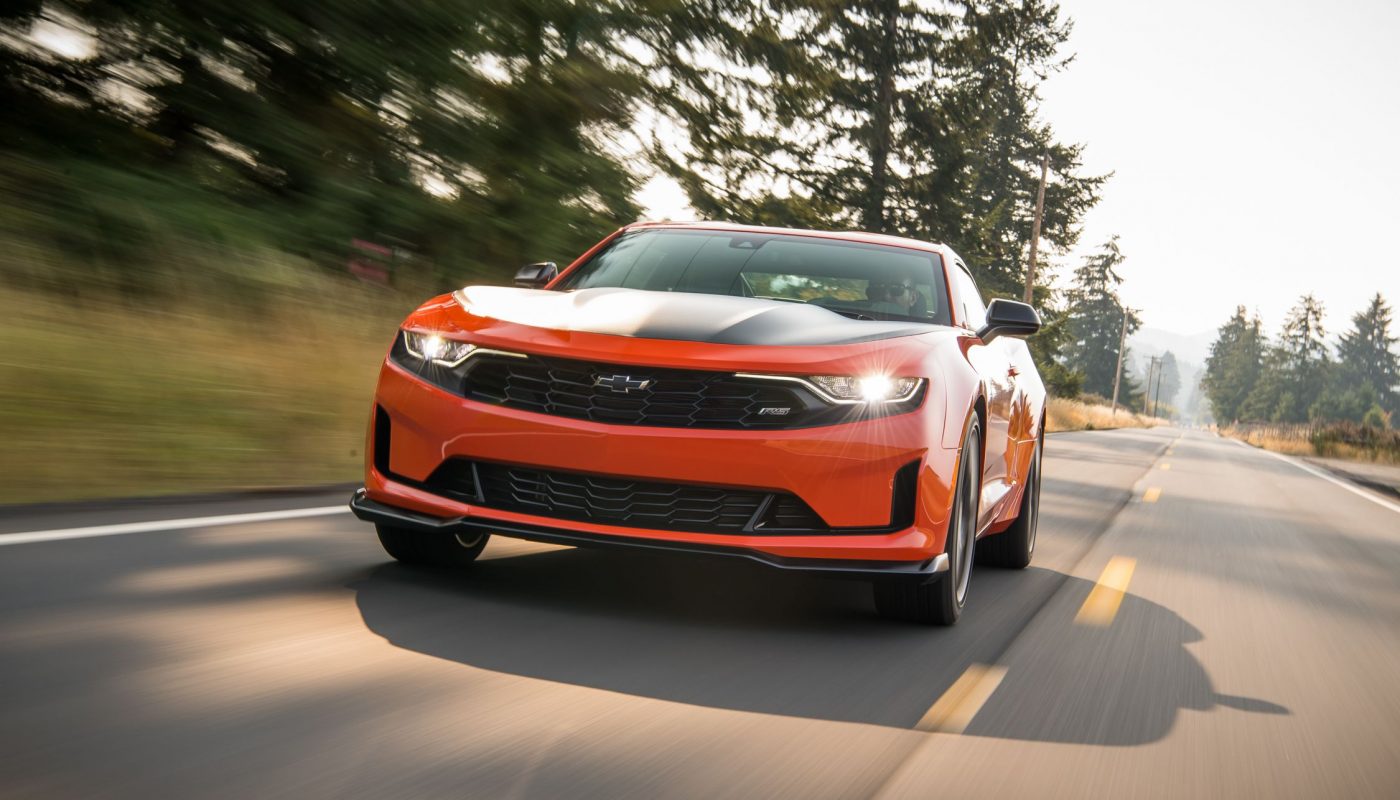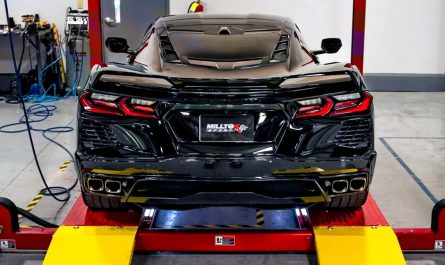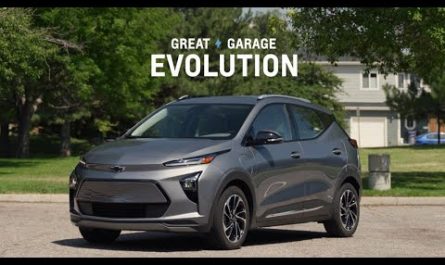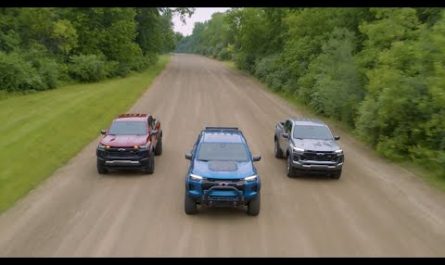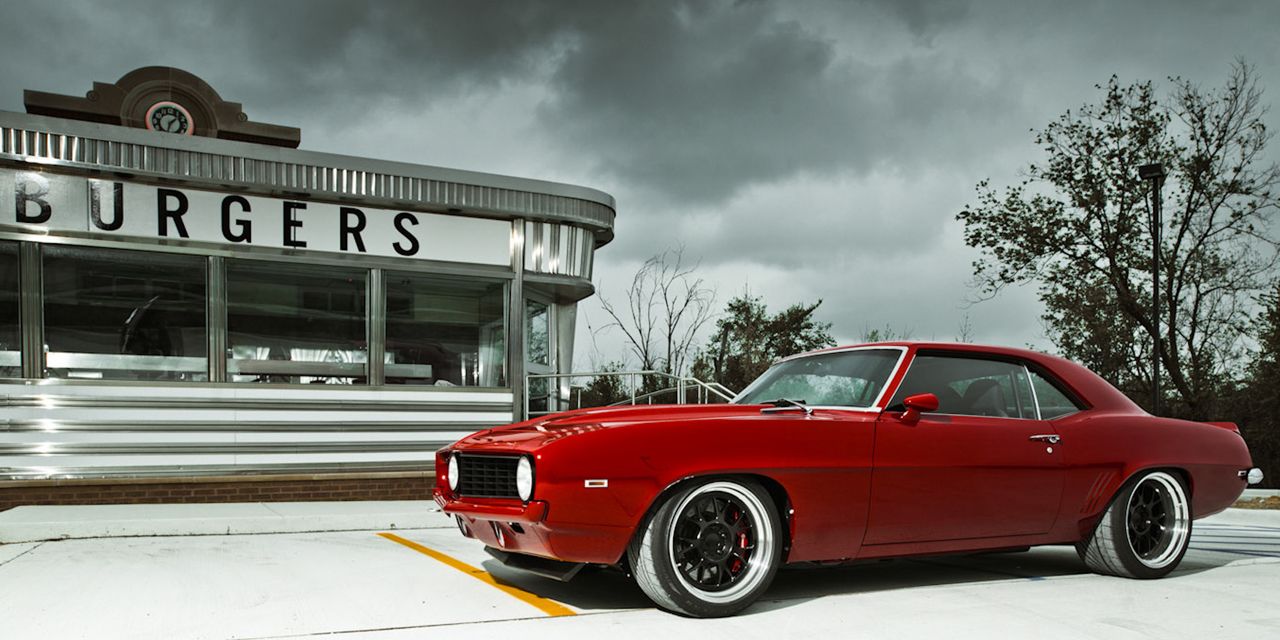
The Chevy Camaro was a rush job, a desperate attempt by GM to meet the challenge presented by the ludicrously successful Ford Mustang.
The introduction of the Mustang in April 1964 caught virtually everyone except Ford off guard. Where was Chevy’s affordable sporty car to compete with the Mustang? The rear-engine Corvair didn’t really cut it, and the boxy Chevy II Nova lacked sex appeal. While there had been notions advanced for producing a “Super Nova” of sorts before the Mustang debuted, it wasn’t until the Mustang was a proven hit in August of 1964 that the go-ahead was given to rush a comparable car into production. That’s a fully developed car in Chevy showrooms by the fall of 1966—barely more than two years.
The same basic car, known within GM as the F-car, would also show up at Pontiac dealers as the Firebird. But while Pontiac would spin the car its own way, the Camaro was almost fully baked by the time the Firebird was approved for production.
Although the Camaro would become the Mustang’s most intense rival, its history doesn’t strictly parallel that of the Ford product. And with five generations of Camaros already behind us, and a sixth on its way, that heritage is worth charting.
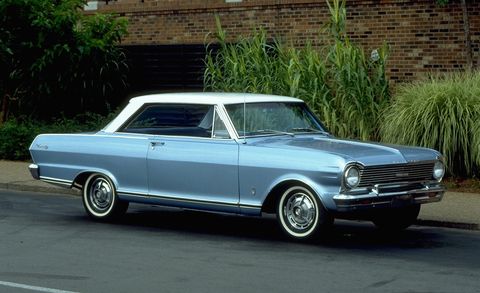
To create the Camaro, Chevrolet started with the compact Chevy II Nova (itself a belated response to Ford’s Falcon). In much the same way that the first Mustang is mostly a Falcon under its skin, the first Camaro is mostly Nova bits. That includes its hybrid structure of a unibody with a front subframe. But while Novas like this ’65 were in production as the F-car was being developed, the Camaro would be based on the upcoming second-generation Chevy II that would appear as a ’68 model.
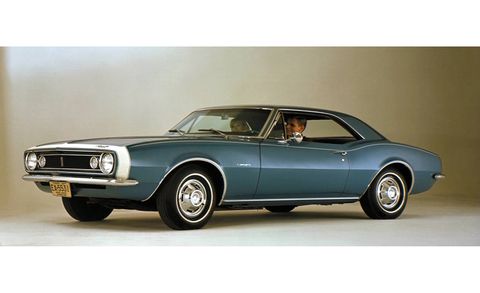
The first Camaro went on sale in September 1966 with a base price of $2466. Just over 220,000 were sold that first year compared to more than 480,000 Mustangs during the same period. The base engine was a 230-cubic-inch (3.8-liter) straight-six rated at 140 gross horsepower. The option list was long and included four different small-block V-8s and two big-blocks. The top choice was the 375-hp, 396-cubic-inch (6.5-liter) L78 big-block.
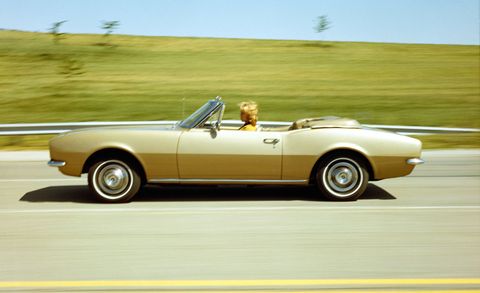
Alongside the coupe, Chevrolet offered the Camaro as a convertible, priced roughly $240 more than the coupe. Just 25,141 convertibles were part of 1967 Camaro production.
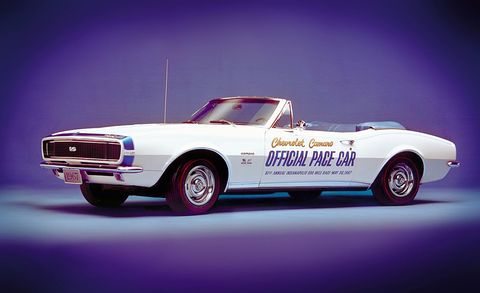
The 1967 Indianapolis 500 was paced by a Camaro convertible with a 325-hp version of the 396 big-block V-8 engine under its hood. Chevrolet didn’t produce replicas as such, but there were 100 of these Ermine White droptops built for Indianapolis Motor Speedway use, most of which were later sold as used cars.
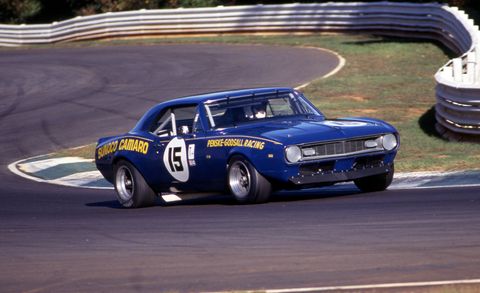
Chevrolet was determined to establish high-performance credentials for the Camaro. It did that with the creation of the 1967 Z/28 powered by the 290-hp DZ302 4.9-liter high-compression V-8. In the hands of team owner Roger Penske and driver Mark Donohue, the Z/28 would prove, after some creative engineering including an acid bath for the body shell, to be racing dynamite in the SCCA Trans-Am series. During the 1967 season, Donohue would win three times. In 1968, the same car (redecorated as a ’68) was among those used by Donohue to win 10 of the 13 races that season.
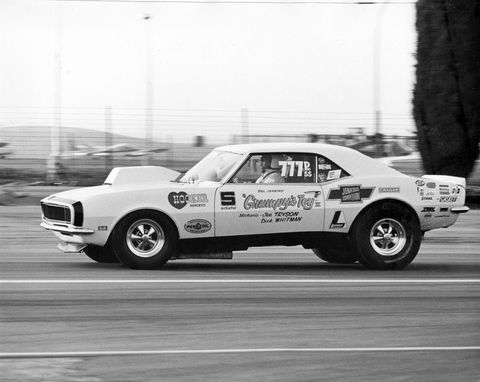
Camaros have long been among America’s most-raced cars. Alongside Donohue’s Camaro, legends like Bill “Grumpy” Jenkins was campaigning Camaros in NHRA drag racing. Here’s Grumpy’s 1968 Camaro on its way to winning the very first Pro Stock title at the 1970 Winternationals.
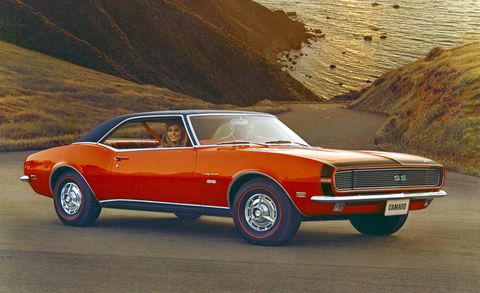
Changes for 1968 included “Astro Ventilation” that eliminated the need for vent windows. New taillights and grilles were also part of the package. Choosing the RS option included hidden headlights. The SS option included dual exhaust, red-stripe tires, black accents on the grille, and a retuned suspension.
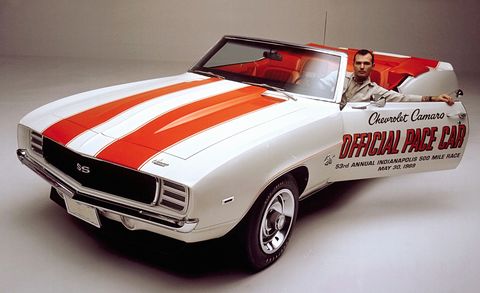
Structurally, the 1969 Camaro was little different from the first two editions. But the bodywork was more voluptuous and slightly provocative. For the second time, a Camaro paced the Indianapolis 500, and this time Chevrolet produced 3675 replicas of this Z11 convertible with its signature orange houndstooth upholstery. Fully loaded, these Z11s included both the RS and SS packages, plus the new-for-’69 ZL2 cowl-induction hood.
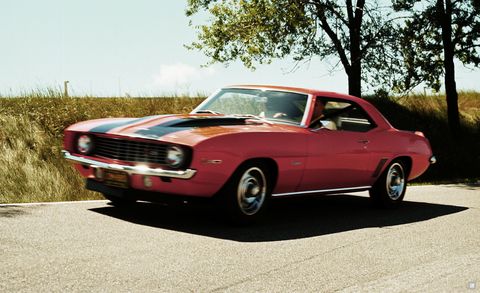
The 1969 Z/28 wasn’t mechanically much different from the ’67 and ’68 models, but many consider it the ultimate Camaro in appearance. During the 1969 model year, the Z/28 was joined by two special-order, low-volume, and race-oriented models. Built through the Central Office Production Order (COPO) system, they were the COPO 9560 and 9561. The 9561 was powered by the 425-hp, L72 iron-block 427-cubic-inch (7.0-liter) big-block V-8, and many of the examples made went to Yenko Chevrolet in Pennsylvania, where they became the Yenko Camaro. Only 69 of the 9560s were built, and they were all powered by the aluminum ZL-1 big-block also rated at 425 horsepower. Those ZL-1 Camaros built in 1969 are considered the most collectible of them all.
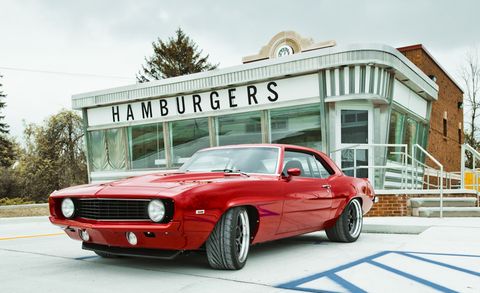
Hot rods are an essential element of the Camaro’s heritage. Over the years, the Camaro has been twisted by its owners into parade floats, jacked-up street racers, gilded Pro Street show cars, and a few truly awesome supercars. GM engineer Mark Stielow’s series of first-generation Camaros are thoroughly rebuilt around the vast hoard of aftermarket parts available for the car as well as later-model components adapted to the vehicle.
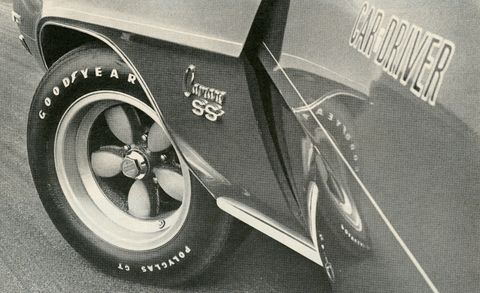
Even as GM prepared the second-generation Camaro for 1970, C/D was still playing with the ’69. Our Blue Maxi remains one of the magazine’s most indelible project cars. “The Company Car: a dazzling, dizzying blue wonder that had no easy goals to meet,” we wrote. “It would have to handle with its Trans-Am brothers and do us justice on the dragstrip. At the same time it would have to be tractable on the highway and it would have to be a credit to its publisher. Mostly it had to represent everything we thought was right about the automobile in an atmosphere of increasing criticism of anything with four wheels—especially four fat wheels.”
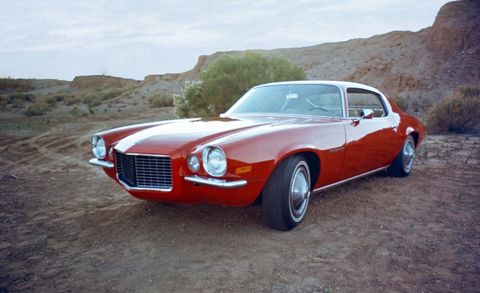
The second-generation Camaros didn’t make it to dealers until February of 1970, making them 1970½ models. Bigger than before and lacking a convertible variant, the new Camaro was nonetheless similarly engineered to the first-generation car, with a front subframe and a unibody rear structure.
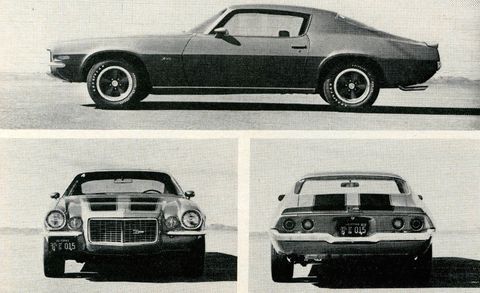
From C/D’s first road test of the 1970½ Z/28: “Somehow, though, the Z/28 is not as thrilling as it once was. It’s more tolerant to driving techniques now, more mature in its behavior. All things considered, it’s a better engine now, but the loss of a carefree and irrepressible adolescent spirit can never be witnessed without some regret. And although the Z/28 seems much tamer now than it once did, the transformation is more a function of the car than of the increase in displacement.”
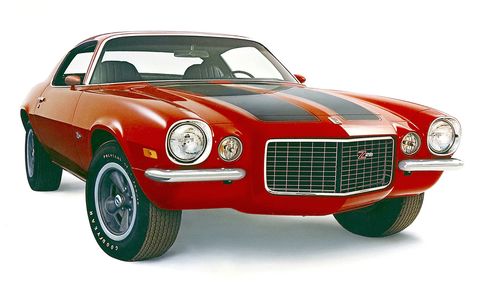
The Z/28 carried over to the second-generation Camaro, but it was now powered by a 350-cubic-inch (5.7-liter) small-block LT-1 V-8 rated at 360 horsepower. The LT-1 may have sacrificed some of the DZ302’s high-revving charisma, but it was a much friendlier everyday driving companion. The Z/28 in this photo features the new RS front end with its split bumpers and driving lights alongside the grille. The high-back seats indicate that the pictured car is a 1971 model—when a switch to SAE “net” power-rating standards dropped the nominal output of the LT-1 to 330 horsepower.
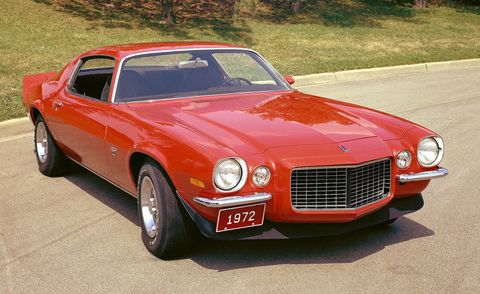
The second-generation Camaro carried on visually almost unchanged through 1973. And yes, the styling was cribbed from Ferrari. Most obviously GM stole from the 1963 250GT Lusso. The big-block V-8s fell off the menu for 1973.
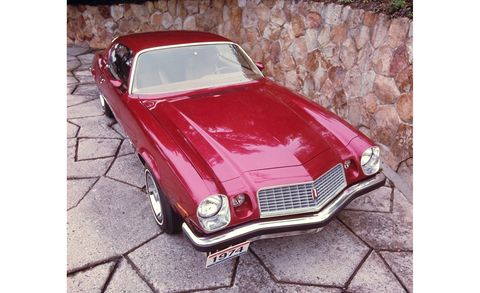
New federal bumper regulations meant the nose and tail of the Camaro had to be redesigned for 1974. Considering how massive those aluminum bumpers were, the car survived their addition admirably.
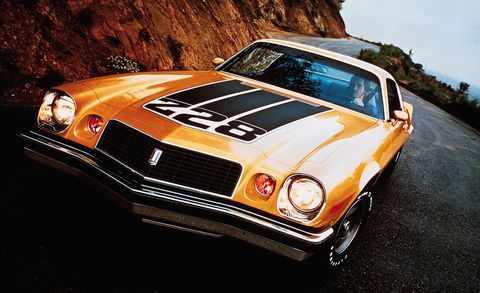
The Z/28 got bold new graphics for ’74, but the car itself was becoming fat, lazy, and underpowered. The 350 V-8 under the hood was rated at only 245 horsepower. Yawn. Maybe the Z/28 needed to be gone. And by 1975, it was!
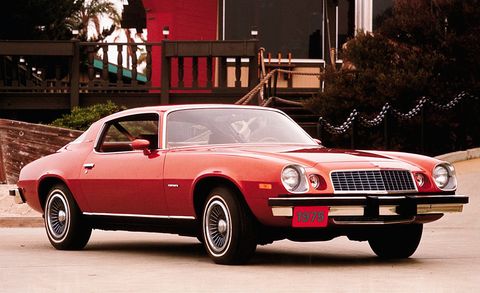
With the excision of the Z/28, the most exciting thing about the 1975 Camaro was the new wraparound rear window that slightly—very slightly—increased rear visibility. This was the first year for catalytic converters, and the output of Camaro engines skidded downward. The six could wheeze out only 105 horsepower while the “big” 350 V-8 was rated at a miserable 145 horsepower when equipped with a two-barrel carburetor or 155 horsepower in California and high-altitude areas where a four-barrel arrested the decline.
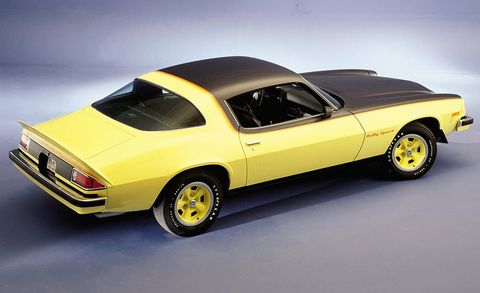
In ’75 the Rally Sport option became a paint-and-tape package. Flat-black paint in the 1970s was a challenge to protect. Painted bumpers were, um, well, er . . . 40 years later, they don’t look so good. Little changed with the ’76 model.
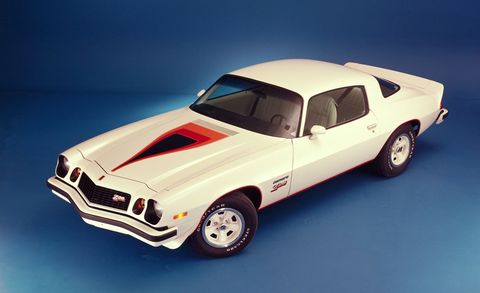
Midway through the 1977 model year, the Z28 returned shorn of its mid-name slash. Now emphasizing handling, it rode on big, 15×7-inch wheels, and its 350 small-block was rated at a towering 185 horsepower. (In 1977, 185 horses was huge.) Despite this lack of excitement, Chevy sold almost 219,000 ’77 Camaros—that was almost three times the sales of its younger, smaller, sport-coupe brother, the Monza.
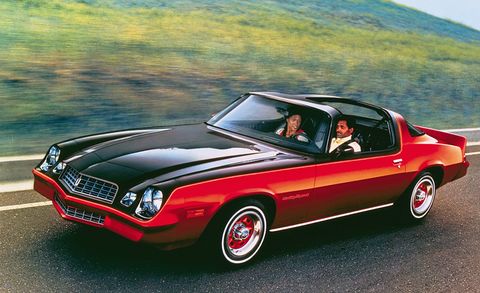
The big change for ’78 was new soft-plastic bumper covers. Also, for the first time, a translucent T-top roof option was also added. Good-looking whitewall tires, too.
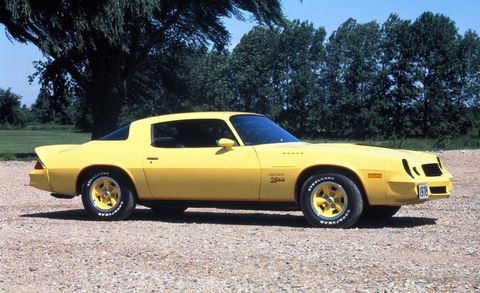
Here’s the ’78 Z28. The drivetrain carried over from ’77.
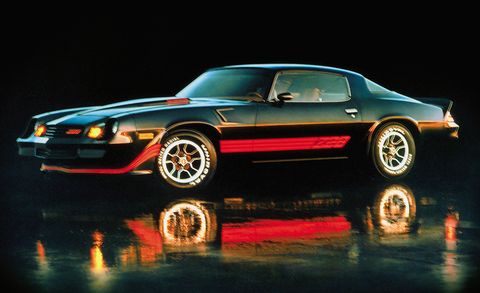
The last of the second-generation Camaros were built as 1981 models. That 11-year model run is the longest for a Camaro generation.

Truly all new, the 1982 Camaro used a full unitized structure, a new coil-spring rear suspension, and struts in the front. And for the first time, the Camaro was a hatchback. But while the new Camaro was modern and gorgeous in that flat-plane 1980s way, it was seriously underpowered. Base Sport Coupes were equipped with the heinous 2.5-liter “Iron Duke” four-cylinder rated at 90 horsepower. A 112-hp, 2.8-liter V-6 was optional while the Z28’s base 5.0-liter V-8 with a four-barrel carburetor put out only 145 ponies. But at least that engine could be had with a four-speed manual transmission. Opting for the 165-hp Cross-Fire-injected version of that engine meant going with a three-speed automatic.
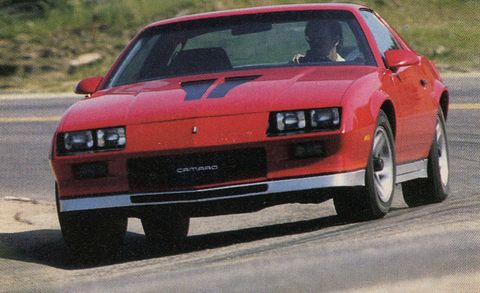
In our August 1982 issue, Don Sherman reported this about the new Z28 with Cross-Fire throttle-body injection: “When you drive a Z28, there is one engineering breakthrough that slaps you right in the face: This Camaro is not a committee car. The shock valving is so tight that you feel pebbles on the pavement as you back out of a parking space.” Sherman slammed the car’s anemic acceleration, however. It took 8.6 seconds for the Camaro to hit 60 mph, and the quarter-mile needed a languid 16.4 seconds to go by at 83 mph.
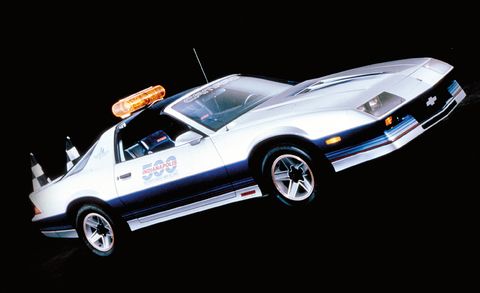
Introduction of the all-new third generation was reason enough for the Camaro to pace the Indianapolis 500 for the third time. Unfortunately, the pokey 165-hp Cross-Fire Injection 5.0-liter V-8 was the most powerful engine available. That’s not enough for Indianapolis. So the actual pace car was powered by a modified 5.7-liter V-8 that wasn’t offered in a production Camaro.

Neil DeAtley’s two Budweiser-sponsored Camaros dominated the 1983 Trans-Am season. Drivers David Hobbs and Willy T. Ribbs took nine of the 13 events in these tube-frame racers. Ribbs won five races and Hobbs four, with John Paul Jr. adding a 10th Camaro victory for another team. Hobbs won the championship based on his consistent finishes.
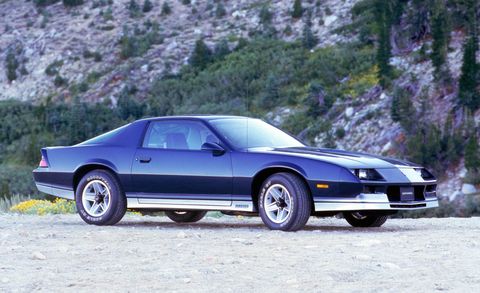
Performance was returning to the Z28 by 1983 with the introduction of the 190-hp L69 version of the 5.0-liter V-8. While it still used a four-barrel carburetor, it was now available with a five-speed manual transmission. This is the ’84 Camaro, which looked almost identical to the ’82 and ’83. GM’s 700R4 four-speed automatic was optional on most Camaro models by ’84.

The big leap forward for Camaro performance in the ’80s was the introduction of the IROC-Z with its spectacular 16-inch five-spoke wheels. But the best news was the newly available Tuned Port Injection (TPI) version of the 5.0-liter V-8 that delivered a sweet 215 horsepower. And so New Jersey got its official car. And the 1985 Camaro IROC-Z earned a spot on C/D’s 10Best list that year.
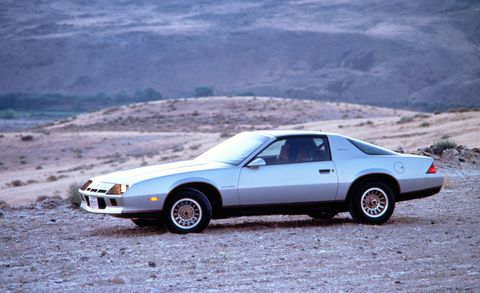
The third-generation Camaro was offered in a now practically forgotten Berlinetta model with V-6 or V-8 power and an almost hypnotic digital dashboard. Interest in the Berlinetta shrank to only about 4500 units in ’86, and it wasn’t part of the ’87 lineup. There’s a reason why they’re forgotten.

The 1987 model year brought two good things to the Camaro. First was the return of a convertible model—the first since 1969. And second was the big 5.7-liter TPI V-8 rated at 225 horsepower. It also brought exile of the truly awful Iron Duke four to crap-can purgatory. By ’88 the Z28 name had vanished in favor of IROC. And in ’88 came the brilliant IROC 1LE package, which set the Camaro up for startling success in showroom-stock racing.
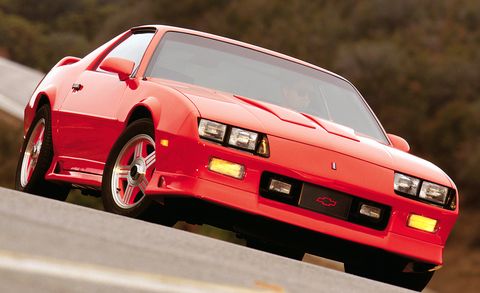
Dodge took up sponsorship of the International Race of Champions in 1990, and with it came the right to use the IROC name. So Chevy went back to Z28 for its high-performance Camaro line during the 1990 model year. It was great news if you loved tall rear wings, silly hood scoops, and new five-spoke wheels. By 1992, the third-generation car was a decade old and ready to be replaced.
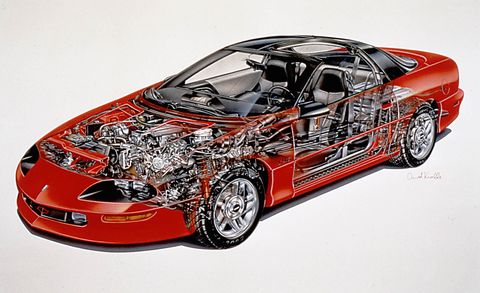
With rack-and-pinion steering, a new 275-hp 5.7-liter V-8 wearing the LT1 name, and an available six-speed manual transmission, the fourth-generation Camaro Z28 was a startling performer. “Any 3452-pound car that clears the quarter-mile in 14.0 seconds at 100 mph and circles the skidpad at 0.92 g is a tremendous performer,” wrote C/D’s Patrick Bedard in a comparison test that the new Z28 won.
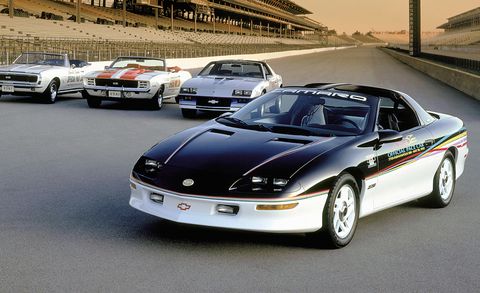
In 1993, the Camaro paced the Indianapolis 500 for the fourth time. And this time, it did the deed in strictly stock form.
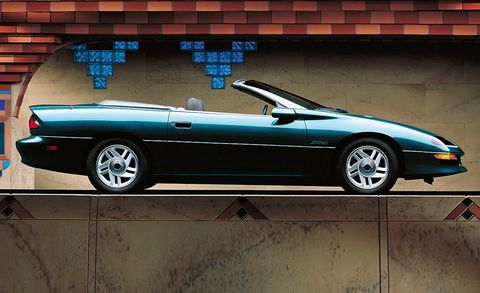
The convertible model returned for the 1994 model year. In 1995, GM’s 3800 3.8-liter V-6 joined the 3400 3.4-liter V-6, giving Camaro buyers their first choice of V-6 powerplants. The 200-hp 3800 was vastly more refined than the 160-hp 3400 and would replace the 3400 entirely by 1996. Meanwhile, output of the LT1 V-8 rose to 285 horsepower in ’96. And beyond that, SLP Engineering brought back an SS model of the Z28 that tweaked the engine to 305 horsepower and fitted 17-inch wheels for the first time.
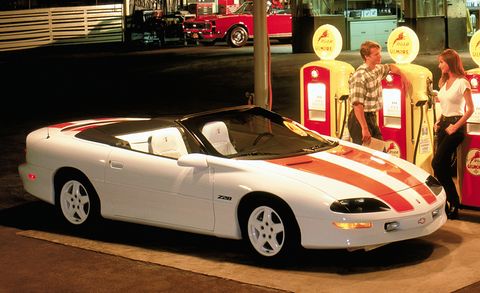
To celebrate the Camaro’s 30th anniversary, Chevrolet released a white convertible Z28 with orange stripes reminiscent of those on the 1969 pace car.
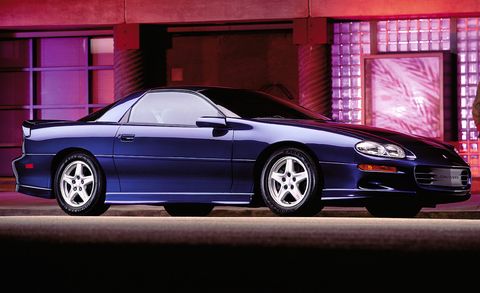
The fourth-generation Camaro’s one significant update occurred for the 1998 model year, when it got a new face with compound headlights and the LT1 5.7-liter V-8 gave way to the all-new, all-aluminum 5.7-liter LS1 V-8 rated at 305 horsepower. GM also brought production of the SS in-house, and the free-breathing LS1 in that machine was now rated at 320 horsepower.
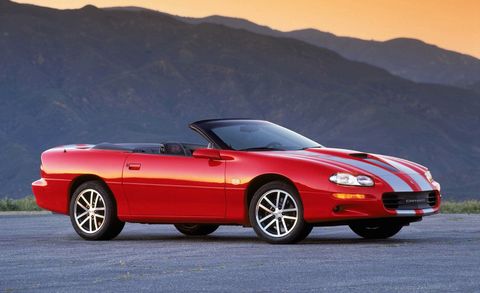
By the turn of the 21st century, the Camaro was both an old product and, seemingly, an irrelevant and archaic one. “Although GM has done a good job of keeping the F-car chassis viable,” wrote our own Tony Swan in 1999, “it’s still a live rear axle setup, and it shows us, once again, that live axles have definite handling limits, particularly on bumpy roads. In this case, we found that oversteer was just one injudicious stab of the throttle away, and one tester went so far as to call the Z28’s handling ‘spooky.’ ” Still, it was quick, running from zero to 60 mph in 5.2 seconds and knocking off the quarter-mile in 13.8 seconds at 104 mph. Chevy celebrated the Camaro’s 35th anniversary with a special graphics package on the Z28 SS coupe and convertible—and then killed the car. Seemingly forever.
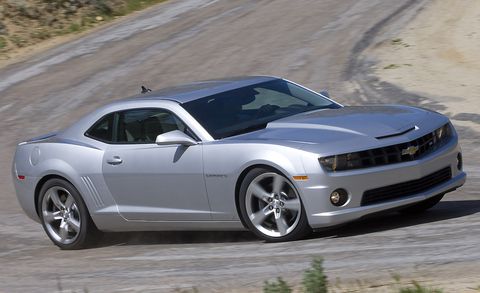
By 2009, Chevrolet was ready to recognize the error of its ways, and that year it reintroduced the Camaro as a 2010 model. Now based on an Australian Holden chassis with an all-independent suspension, it was offered in base and RS form powered by a 304-hp, 3.6-liter DOHC 24-valve V-6 or as an SS powered by a 6.2-liter LS-series V-8 rated at a massive 426 horsepower. The major problem with the new car? It was tough to see out of it. “It’s not a Camaro unless it can set fire to a burnout box,” wrote C/D’s Aaron Robinson. “Frankly, we expected the 60-mph mark to arrive sooner than 4.8 seconds.” Oh, how standards had changed.
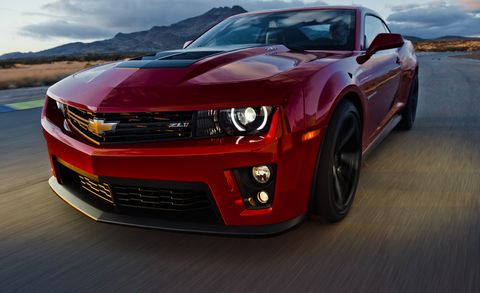
In 2012, Chevy went nuts and began offering the Camaro in a new ZL1 form powered by a supercharged 6.2-liter V-8 rated at 580 horsepower. How does zero to 60 in 4.1 seconds sound? Yup, it sounds like, looks like, and goes like it’s the quickest and most capable Camaro yet conceived. It’s a good way to celebrate the car’s 45th anniversary. But that wasn’t the end. First, in 2013, there was a new 1LE. And then in 2014 . . .
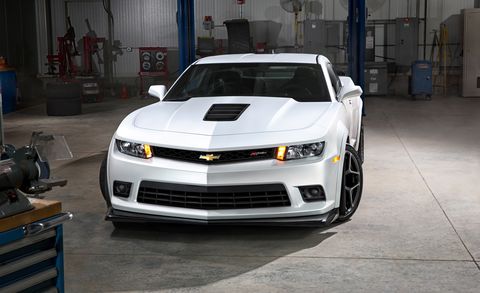
The Z/28 came back—harder and better than ever before—and the old-school slash in the name came with it. “The Z/28 is not the quickest, the fastest, or the most powerful Camaro, but it is the most expensive at $75,000, or more than three times the price of a six-cylinder model,” explained our youthful Eric Tingwall. Powered by a naturally aspirated 7.0-liter LS7 V-8 rated at 505 horsepower and wearing enormous 305-mm-wide tires at every corner on 19-inch wheels, the newest Z/28 is optimized and radicalized for on-track dominance. It’s a great way to send out the fifth-generation Camaro. Because a new one is coming for 2016.
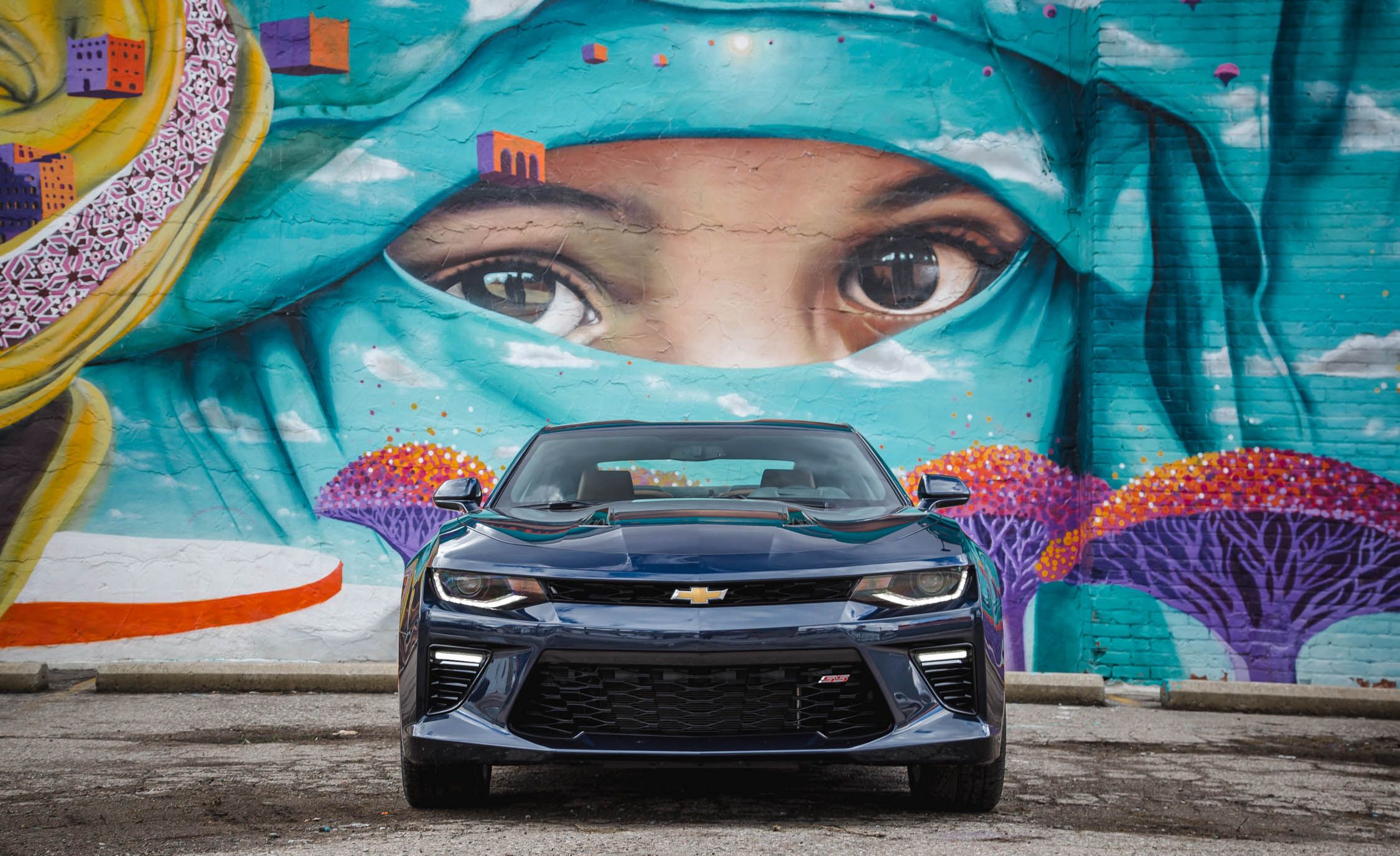
The Camaro enters its sixth generation lighter, more toned, and sitting atop General Motors’ excellent Alpha platform first utilized for the Cadillac ATS. The platform change makes the Camaro dynamically superior to its predecessor, the contemporaneously revised Mustang, and Dodge’s aging Challenger. The C7 Corvette’s 455-hp 6.2-liter LT1 V-8 is recruited for duty in the Camaro SS, while the General’s corporate 3.6-liter V-6—making a healthy 335 horsepower here—is the midrange engine option. For the first time since the 1985 model year, a four-cylinder engine is offered in the Camaro. The turbocharged 2.0-liter base engine makes the same 275 horsepower as did the ’93 Camaro Z28’s LT-1 V-8.—Davey G. Johnson
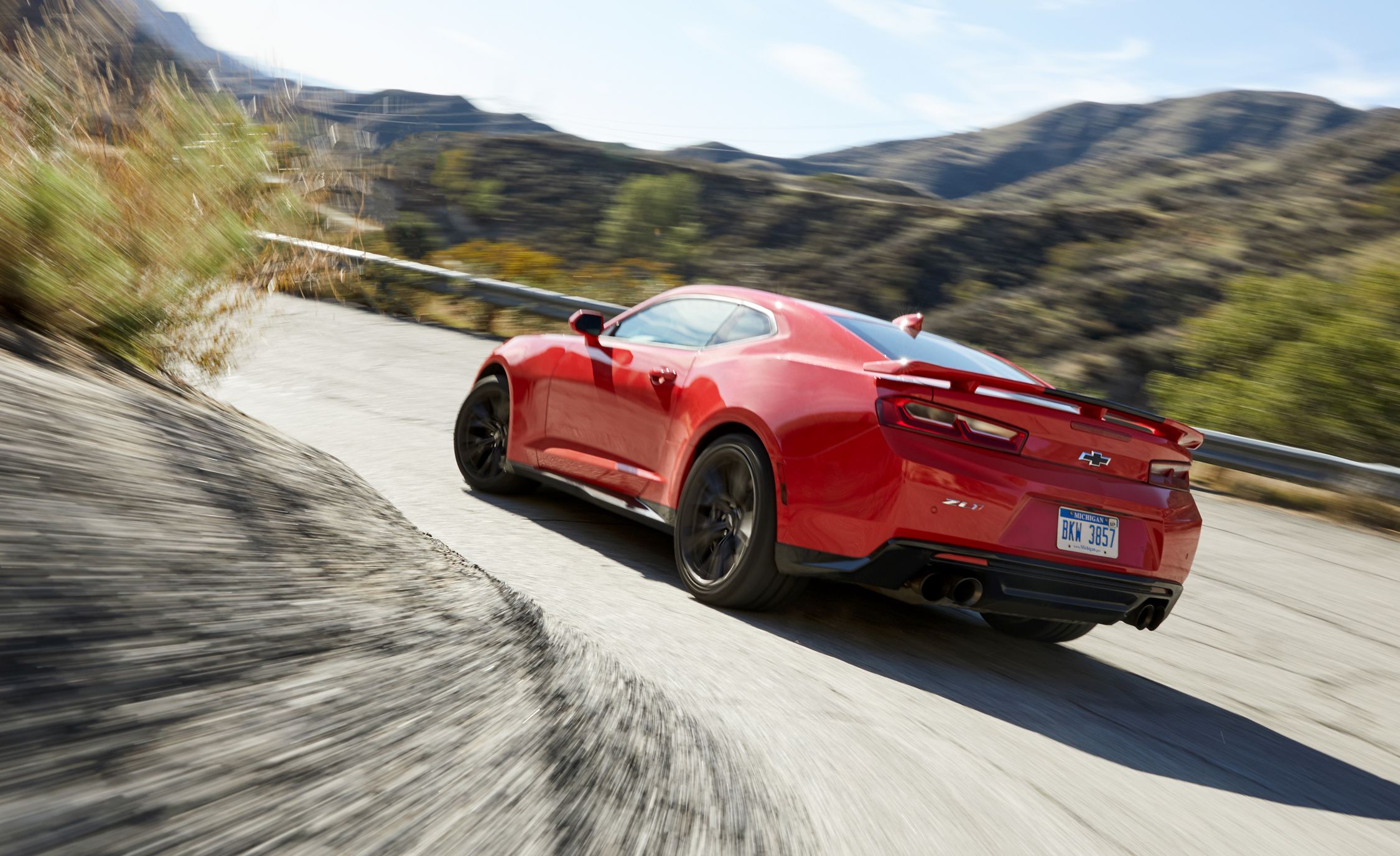
Just in case the 455-hp sixth-generation Camaro SS model was leaving any buyers feeling bereft of muscle, the supercharged ZL1 returns for the 2017 model year to hearten the bow-tie-loyal hordes and take a swing at Dodge’s unhinged 707-hp Challenger Hellcat. As with the SS, the ZL1 borrows its motivation from a Corvette, in this case the Z06’s 650-hp supercharged LT4 V-8. This Camaro is also the first Chevrolet product to use the 10-speed automatic transmission GM co-develops with Ford. Despite giving up 57 horsepower to the Challenger SRT Hellcat and its blown Hemi V-8, the ZL1 beats it to 60 mph by 0.2 second, needing only 3.4 seconds to reach that benchmark speed.
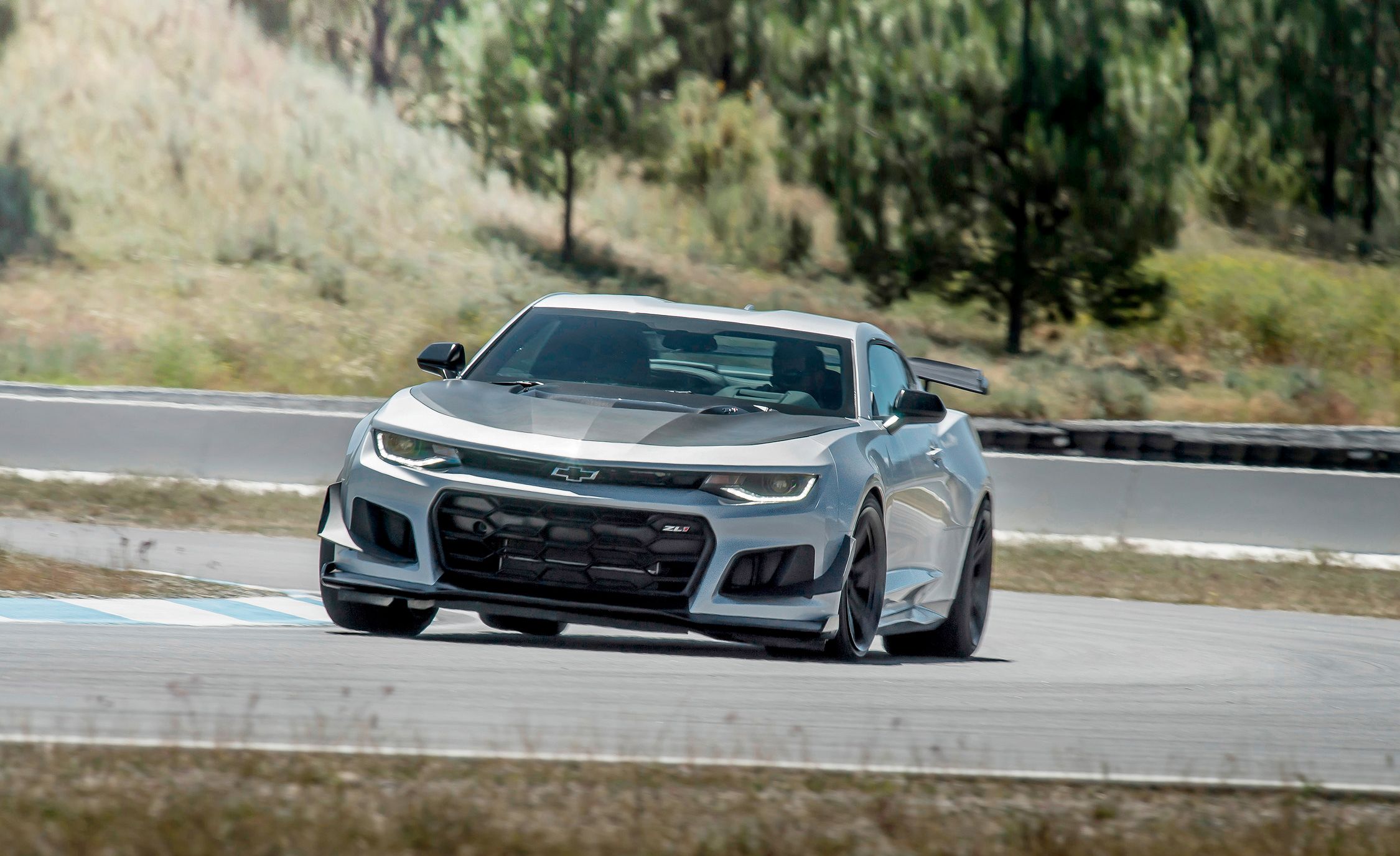
Originally offered as an all-cattle, no-hat version of the third-generation Camaro to folks primarily concerned with showroom-stock racing and autocross, later as an RPO code on the fourth-gen model, and finally as a performance package for the fifth-gen Camaro, the 1LE name makes a comeback for 2017. At first, only V-6 and V-8 models are offered with the 1LE gear, which adds a flat-black hood, extra engine and transmission coolers, a firmer suspension, performance tires, and a limited-slip differential. A year later, Chevy adds a 1LE option to the ZL1 (pictured here) that steps things up further with a carbon-fiber wing and Multimatic-sourced spool-valve dampers.
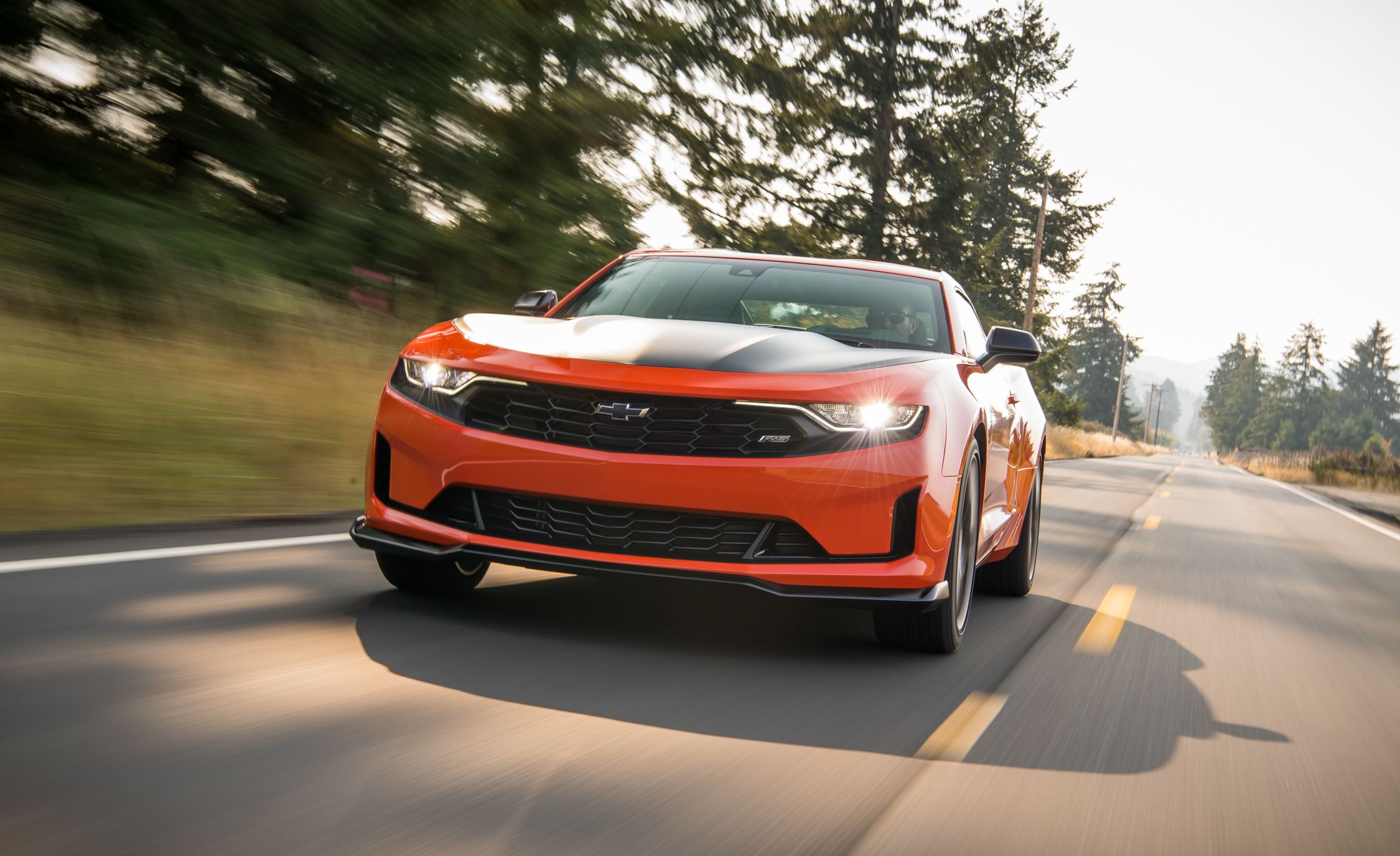
For 2019, Chevy updates the Camaro lineup with a gaping, dark front-end treatment similar to that on the ’19 Silverado pickup truck. Aside from the new aesthetics and the expansion of the 1LE treatment from the six- and eight-cylinder Camaros to the turbocharged four-cylinder base model (pictured above), most of the changes apply to the Camaro SS. A version of the ZL1’s 10-speed automatic transmission replaces the previously optional eight-speed unit and includes launch control and a line-lock function for maximum burnoutage.

